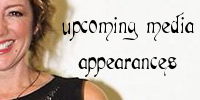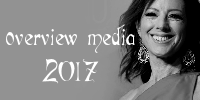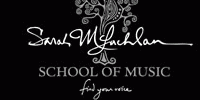November 06, 2013
Publication title: straight.com, vol. -, Iss. -, pg. –
Place: Unknown
Writer: Janet Smith
Alberta Ballet meets Sarah McLachlan in Fumbling Towards Ecstasy
Sarah McLachlan had little exposure to the art form before working with the Alberta Ballet on its ode to her hit songs
Sarah McLachlan tried to hold on, she really did, but finally her emotions got the better of her.
The singer has performed her aching hit hundreds of times, and no doubt heard it countless others. But there was something about seeing “Hold On” portrayed through dance that made her lose it when Alberta Ballet presented the world premiere of Fumbling Towards Ecstasy, its ode to her heartfelt songs, in Calgary.
“I know what the song is about and it’s very emotionally charged for me, and it was just this pained love and loss playing out on their faces and bodies, and I started bawling,” she remembers of the powerful pas de deux, speaking to the Straight from her West Vancouver home. “And there was this room full of people watching me reacting and I’m trying to suck it up.”
You could say it’s the power of dance—or the power of dance set to McLachlan’s melodious music—as Vancouverites will be able to judge for themselves when Fumbling Towards Ecstasy (named after McLachlan’s multiplatinum 1993 album of the same name) finally makes its debut in her adopted hometown. As McLachlan so eloquently puts it, “It’s exquisite to see emotion played out on a human body.”
Whatever the reason, the experience has turned the West Coast’s best-known songstress into a devoted fan of the art form. Although she studied classical piano, guitar, and voice when she was young, she had never really been exposed to dance.
“I was a ballet virgin; I think we maybe saw The Nutcracker once,” says the Nova Scotia–born artist with a laugh. “And I can’t even begin to dance. I’m two left feet!”
A big reason the star was willing to hand her music over to Alberta Ballet was its artistic director, Jean Grand-Maître, who choreographed Fumbling Towards Ecstasy. She met him during preparations for the 2010 Olympics’ opening ceremony here, where he created the dance segments, including those set to her live singing. Grand-Maître says that all eyes were on McLachlan.
“She came into rehearsal with her two daughters and watched for almost three hours. She was enthralled by how dedicated these dancers were and how they moved,” the charismatic choreographer recalls, speaking to the Straight by phone from his office in Calgary.
What McLachlan probably didn’t realize was that Grand-Maître had enjoyed a deep personal connection to her music for a very long time. He vividly remembers, during the sabbatical year he spent in Rome, listening to her songs through his earbuds while he walked the ruins at night. “Her music has so many images. I think she’s one of the best melodic writers of our time. Ask any composer how difficult it is to write a melody that can be enjoyed by people around the world,” says Grand-Maître.
He also, of course, has long recognized that it would be perfect music to choreograph to. And this was brought to the front of his mind after he created his ode to Joni Mitchell, The Fiddle and the Drum, which showed at the Cultural Olympiad—which McLachlan, intrigued by Grand-Maître’s work, caught during the Games. Mitchell, like McLachlan, had been won over by the hard work and artistic devotion of Alberta Ballet’s dancers, Grand-Maître says. But it was the ensuing response from audiences that really convinced him it was a direction he wanted to continue in. Since Fiddle, he’s choreographed Love Lies Bleeding, set to the music of Elton John, and he’s debuted Balletlujah! with k.d. lang in May.
“When we realized that Joni Mitchell brought the media and the interest and the new audiences unlike anything we’d ever seen, I knew this was something we should do more of,” Grand-Maître says, adding that at least one-third of Alberta Ballet’s audiences for Fiddle were attending dance for the first time.
And so, with a relationship already formed at the Olympics, they agreed to work with each other. McLachlan remembers it all started with a long meeting at her home.
“We sat for five or six hours, and he asked me all kinds of crazy questions. It was like an interview I’d never had before,” McLachlan says.
For Grand-Maître, talking to artists extensively about their work has been a key to building what he calls a “portrait” of their songs.
“I never get to meet composers in ballet because they all died 200 years ago,” he says with a laugh. “That’s why it’s so empowering when I meet them. There are all these clues they give me: it’s like they open their diary. And then it’s really inspiring when you choreograph to the songs because you have such a connection. With that, I could connect to her in a deeper way.”
With McLachlan’s music, the themes emerged quickly. “It was extraordinary. She talked about her life and inspiration and the journey of women these days—the fact she had more choices than her grandmother had and the difficulty of finding a spiritual balance with so many expectations of women.”
The female force of the ballet came out immediately. “You feel like women have a wider back than men,” Grand-Maître adds. “They can sustain more than men.”
Returning to the studio, Grand-Maître came up with a story arc that presented itself naturally: Fumbling would follow the life of a woman through the trajectory of first love, loss, and healing. Instead of a single role, five dancers, aged eight to 55, would play out the stages of the life. For the soundtrack, he drew from early studio efforts, rare and live recordings, and a couple of pieces from McLachlan’s latest album, 2010’s Laws of Illusion.
The music also offered a lot of visual potential: Scott Reid’s sets and Adam Larsen’s projections reflect the ocean that McLachlan loves so much, and the show even integrates some of her drawings.
Obviously, McLachlan’s participation in the project didn’t end with that interview; aside from attending rehearsals and openings, she’s also thrown herself into fundraising for Alberta Ballet. Grand-Maître points out that an appearance by McLachlan at a single evening event raised enough money to pay for the entire production—a pretty amazing side benefit to working with a big star.
For McLachlan, it’s all about helping a neglected art form thrive. “It’s important for me to support Jean and Alberta Ballet,” she says. “I think Jean is a real trailblazer and is one of the reasons dance will survive.…This is a great way to bring a new audience to dance.” Including, it would seem, the ethereal chanteuse herself.
Alberta Ballet’s Fumbling Towards Ecstasy is at the Queen Elizabeth Theatre next Thursday to Saturday (November 14 to 16).












